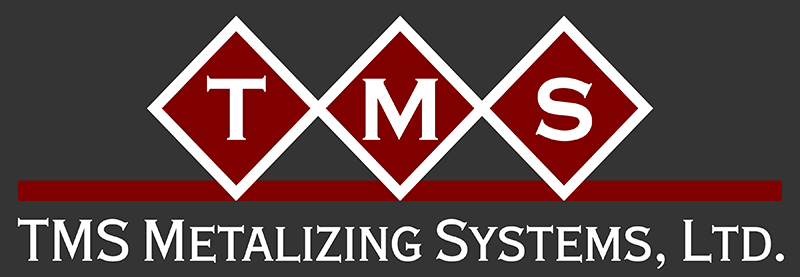Thermal Spray FAQ
Frequently Asked Questions concering Thermal Spray, Metal Spray, and Metalizing
Please contact us for more info.

Thermal spraying is known by many different terms including thermal spraying, metalizing, metallizing, and metal spraying. All of these describe the same process;
All of these describe the same process which is when a heat (electric arc or flame) source melts the feedstock to a molten state, and then being propelled by air, atomizes the feedstock into a sprayed coating. The coating can be used in many industries for many reasons, from corrosion control to building up worn parts.
There are many different types of thermal spray equipment, each with their own set of benefits.
- Arc Spray uses an electric arc to melt wires and compressed air to spray the molten metal which solidifies on the component.
- Flame Spray is a process that uses an oxy-fuel flame to melt wires and in some cases powders or ceramic rods.
- Laser Cladding is a 'hard-facing' process of applying a fully dense, metallurgically bonded, and virtually pure coating.
- Plasma Spray emerges from the nozzle where powder particles are injected and then soften and strike the surface at high velocity.
- High Velocity Oxygen Fuel (HVOF) is a process to apply very dense, strongly adhered coatings and are commonly used as a hard chrome replacement.
We are pleased to offer multiple types of training for the thermal spray process including specialized courses on the setup, operation, and maintenance of our equipment.
Our training programs can be at your site or within our training center (Seattle area), and include a classroom and shop training.
More Info: Metalizing Equipment Operator Training
Thermal sprayed coatings have many advantages over other coatings such as paint or galvanizing:
- Components and structures are ready for use immediately after application
- Compared to paint, thermal sprayed components are less susceptible to damage from shipping and handling
- Thermal sprayed coatings are a cost-effective means of providing long term corrosion protection from the sea, salty air, and other harsh environments
More Info: WHY CHOOSE THERMAL SPRAYING?
When applied correctly, thermal sprayed coatings can last in the harshest environment for decades.
Thermal spraying has been around since the early 1900s! Dr. Max Ulrich Schoop, a swiss inventor, is believed to be the father of thermal spraying. He invented what is now known as a flame spray system.
This depends on the application and intended service life. In general though most corrosion control coatings are specified by industry organisations at 8-12 mils thick. Coatings can be achieved as thin as 1 mil, while others can be 40 mils or more.
Surface preparation is of the utmost importance for thermal sprayed coatings. While specifics differ on the application, for corrosion control coatings, a 2.5 to 4.5 mil agular profile with a white or near white appearance is required.
Yes! Thermal sprayed coatings make an excellent base coating in a duplex paint system. Thermal sprayed coatings can help protect for decades!
We offer two different categories of wire:
Metalizing Wire
Metalizing wire is sprayed onto a variety of surfaces for corrosion control and metal restoration.
- Our Corrosion Control wires include: zinc, zinc-aluminum and aluminum based wires.
- Our Engineering wires include: bronze, copper, nickel, monel, etc. and include both solid and cored wires.
More Info: METALIZING WIRE
Non-Slip Coatings Wire
Our Arctec 28E wire (solid - not cored wire) is sprayed onto surfaces for anti-skid applications, such as platforms, ramps, metal flooring, and aircraft carrier decks.
More Info:
Non-Slip Coatings Products
Non-Slip Coatings Industries
There is no cure time!
